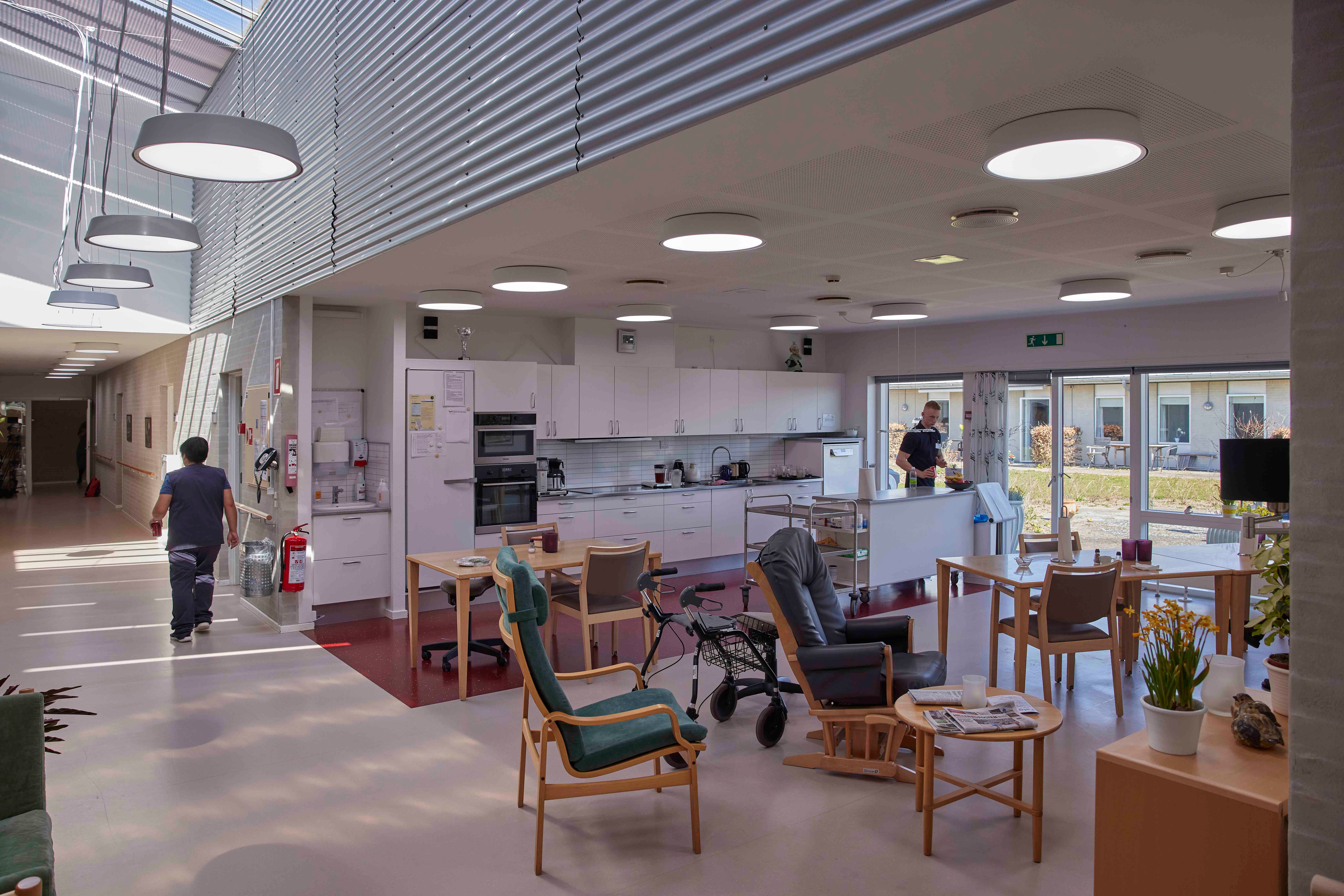In a time when nursing homes nationwide are confronted with a mounting challenge of an increasing number of citizens in need of treatment and care, coupled with a shortage of staff to cater to them, two nursing homes in Hillerød Municipality have embraced fresh ideas to attract and retain employees - their focus is on lighting.
By 2030, there is expected to be a shortage of over 18,000 welfare workers in Denmark. The situation is particularly dire in the field of social and healthcare, where demand is projected to exceed supply by approximately 17,000, according to an analysis conducted by the Ministry of Finance. This shortage is attributed to the fact that by 2030, there will be 150,000 more Danes over the age of 80 – a challenge that necessitates rethinking recruitment and retention strategies in elderly care.
No shortage of creative solutions
At Bauneparken in Skævinge and Ålholmhjemmet in Hillerød, a solution to ensuring a healthier work environment has been implemented. Both nursing homes have installed circadian lighting, which provides residents and staff with the right light at the right time.
— After installing circadian lighting, we can clearly feel the impact it has on us as individuals, and it's truly fascinating, says Gitte Ellekilde Andersen, Manager of Bauneparken Nursing Home.

However, the lighting has not only become an integral part of their everyday environment and structure, but it has also become a valuable tool in their recruitment process.
— We always utilize circadian lighting during the recruitment process, especially when hiring new employees for evening and night shifts, because it allows us to create something truly special for that particular work schedule, explains Kirsten Gosvig, Manager at Ålholmhjemmet.
Value for current and future employees
Circadian lighting has been installed in all service and communal areas of both nursing homes, and it has had a significant impact on the work environment and the job satisfaction of the staff.
— The lighting has made a significant difference. Our employees have reported experiencing increased energy and reduced headaches with the circadian lighting. Evening and night shift workers have also expressed that they find it easier to fall asleep when they return home, says Gitte Ellekilde Andersen, continuing,
— We firmly believe that a positive work environment is the cornerstone of a fulfilling professional life, and that is precisely why we opted for circadian lighting. This lighting system takes into account the shifting work schedules of our employees, and when we recruit new team members, it demonstrates our commitment to nurturing and valuing our staff.

Reduced sick leave with circadian lighting
The shortage of staff is not the only challenge facing the Danish elderly sector. Sick leave among municipal healthcare workers is also problematic, with an average of one month of absence per full-time employee. According to data from the Data Office for Municipalities and Regions, sick leave due to personal illness averages 21 days. However, a study from Fyn suggests that circadian lighting may also potentially help address this challenge.
A 2020 user survey conducted by Herluf Trolle Plejecenter in Odense suggests that circadian lighting can contribute to reducing sick leave among healthcare personnel by up to 21%.
The results of the study indicate, among other things, that the staff in departments with circadian lighting had significantly fewer sick days than those in other departments. On average, employees in departments with circadian lighting had 1.5 fewer sick days during the testing period compared to the staff in the other departments. Furthermore, the study concluded that circadian lighting also helped reduce sick leave from October to February, a period when the risk of infection and viruses is high.
Sources (in Danish):
- SMVdanmark 2022: Fortsat højt sygefravær i ældreplejen
- Danmarks Statistik 2020: 59 pct. flere over 80 år i 2030
- Økonomisk analyse af Finansministeriet 2022: Mekaniske fremskrivninger af udbud af og efterspørgsel efter velfærdsmedarbejdere

